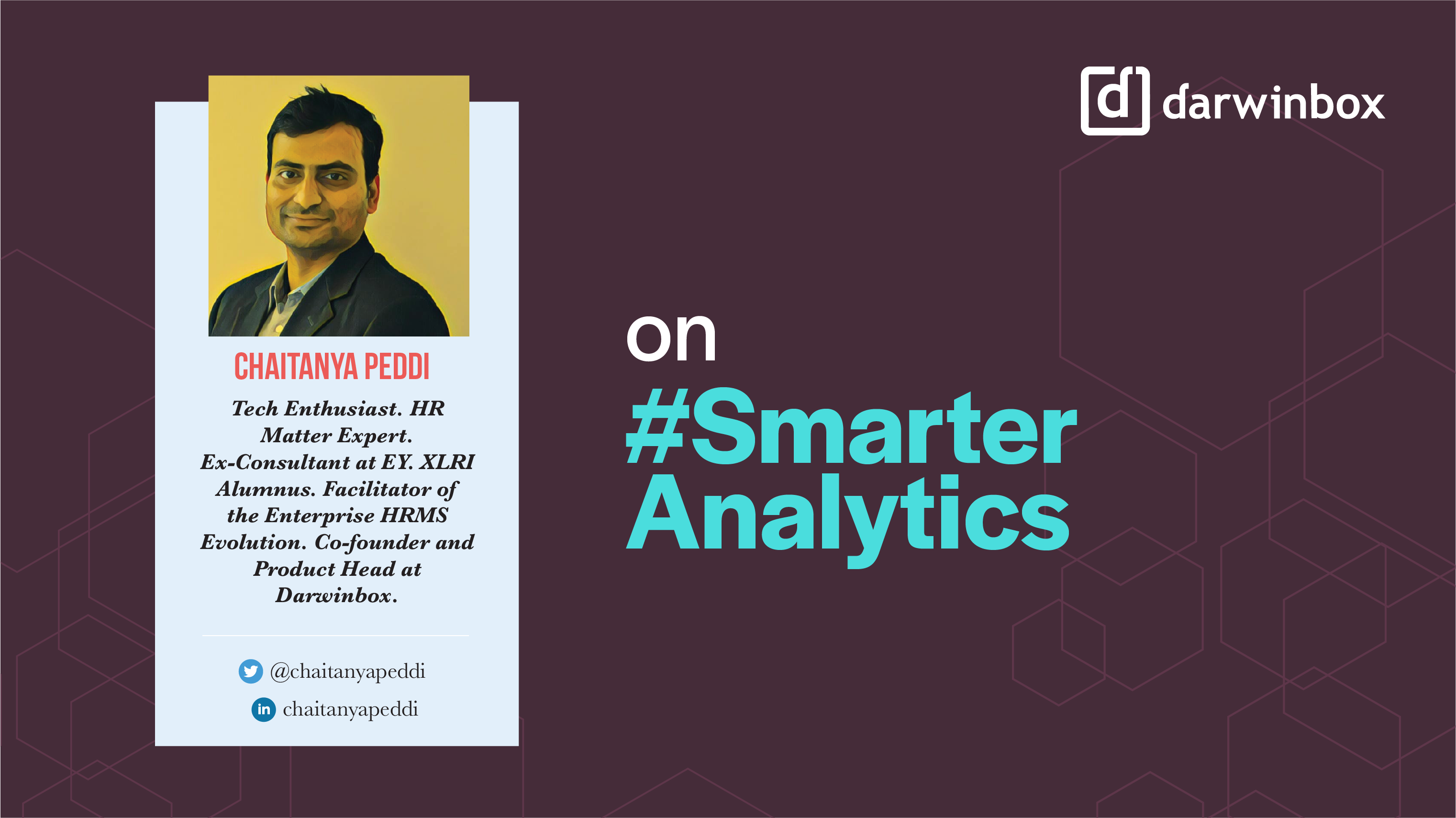
.png)
Since a decade now Analytics has had the spotlight on. In whichever field and function - HR, Sales, Customer Success etc, businesses crave to perfect their game and seize the future with analytics. In the process, they attempt to understand better, the complex web of motivations that drive two kinds of humans - customer and the employee. Leave the debate of who comes first in the business world. All of us will admit that in the world of analytics, customer prevails over the employee.
As a customer, a combination of what you browse, how you spend on your credit card and even what you speak, gets picked up. Some apps on your phone are listening to you while you speak to your colleague next to you - and this is being used to understand when is a good time to engage a customer with the right product recommendation. Now, how difficult is it to apply the same to understand an employee? Frankly, the technology is already tried and tested on customer, and similar AI algorithms can be built to analyze behaviors pertinent to employees. But, the missing piece really is not the tech. It is the data. And when I say that, employee data is lagging in 2 dimensions - a variety of inputs and the quantum of information available in a digital form. The first can be solved by bringing together all the aspects of employee lifecycle on one platform, the second by making technology intuitive and desirable. That’s how Darwinbox started - to build an integrated and intuitive HCM.
We’ve observed that the completeness of a simple employee profile in a large enterprise with an HRMS implemented 2 years ago is still as low as <50%. While employee profile information is the starting point, we need organic adoption to tech in order to bring real-world conversations and context into digital form. The correlation between a feedback session with manager and employee engagement can be used to predict attrition only if that performance check-in is recorded on the system for sentiment analysis. Disintegrated and erroneous data, spread across multiple systems only adds to the struggle. While we work on solving for data, let’s talk about the smarter possibilities that come to life in analytics, once we do.
Macro or micro - seek answers through Interactive Analytics:
Standard dashboards give us insight into metrics and trends, but, as humans, we make decisions by considering a number of scenarios. Trends are valid, but the devil is in the details, isn’t it? Interactive analytics can help us deep-dive into talent trends within pockets of the organization. One can aggregate for macro views, drill-down for contributing factors or cross-analyze correlations to understand the cause-effect relationship (performance vs engagement).
Away from the rut of surveys - gauge Employee Engagement:
Surveys are a good way to gather opinions and popular choices but not to read intent and behavior. Employees are not going to be fully honest about how they feel in an engagement survey. But, they will exhibit behaviors in their daily work routine that can help us understand. We can decipher engagement better from a combination of operational data, performance data, digital interactions, and incidents like a manager change or a buddy’s exit.
Predict right and nurture talent with AI:
Not only can organizations make data-backed decisions and reduce the dependency on intuitions, but AI can be about making the right predictions about talent, employee attrition, identifying top performers at flight risk, suggesting the most suitable candidate for a role, identifying successors for a critical role and deciding a compensation that is fair and rewarding.
We often talk about intelligence, efficiency, and experience in conjunction with technology, but I wanted to end this conversation by proposing another phrase - ‘freedom of flexibility’. The flexibility that allows you to be the ‘true you’ (organization’s authentic self) and freedom to become a ‘new you’ as you evolve. It is the freedom to engage talent your own way and to approach it in an entirely different way when new circumstances demand so.
At Darwinbox we might have overused the quote “It is not the strongest of the species that survives but the most adaptable to change”, but it never goes out of fashion or out of our core product philosophy.
See you on the smarter side.



Speak Your Mind